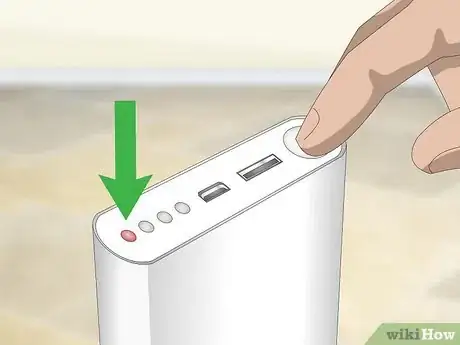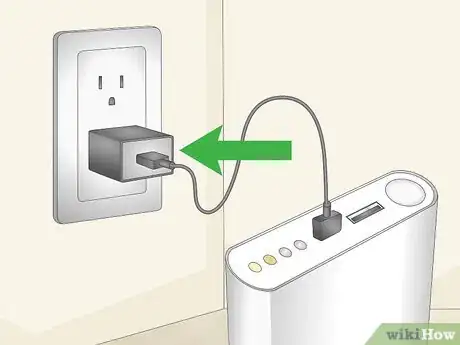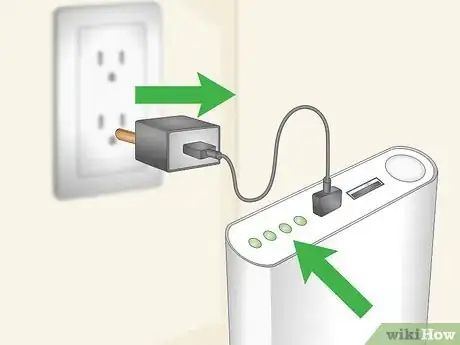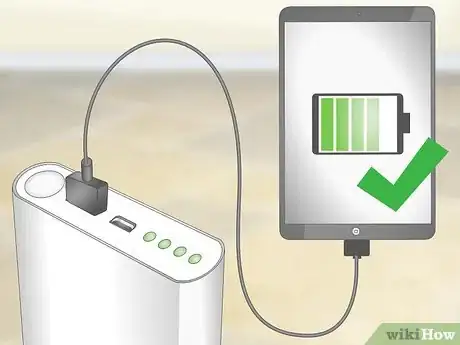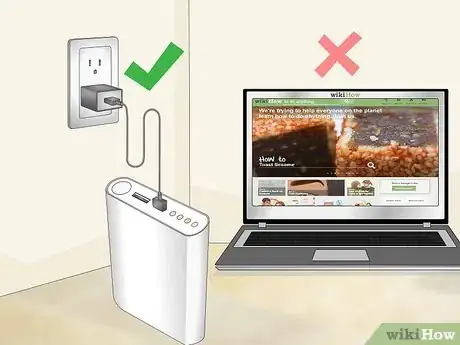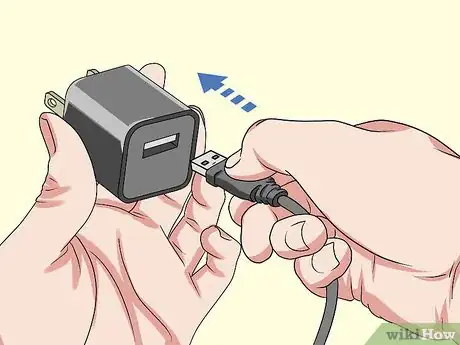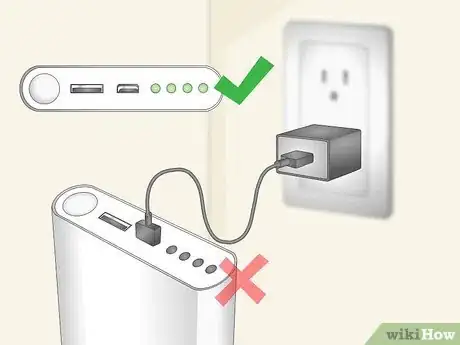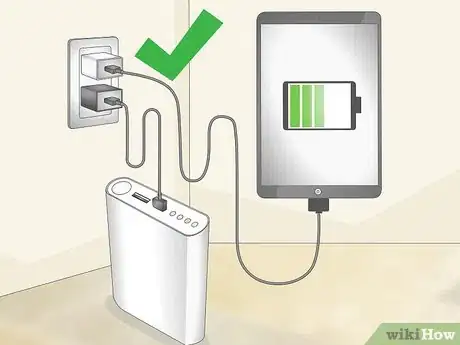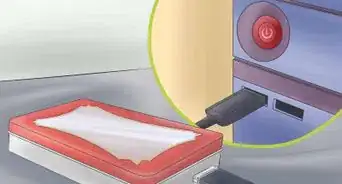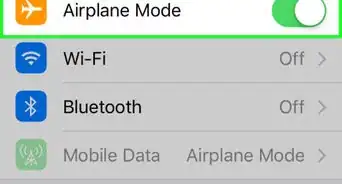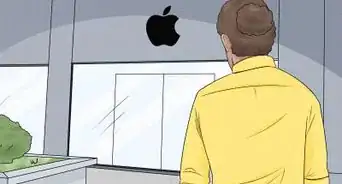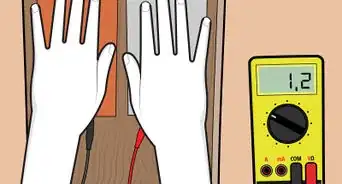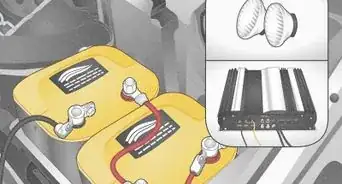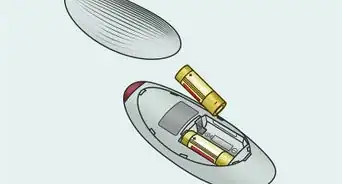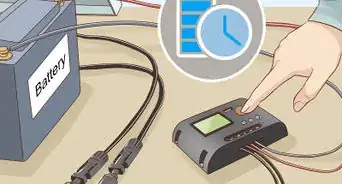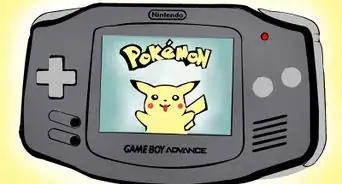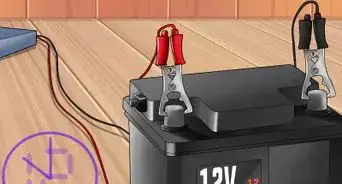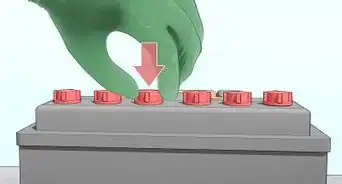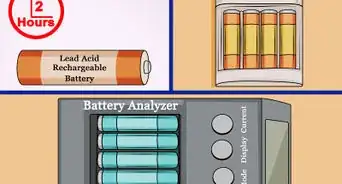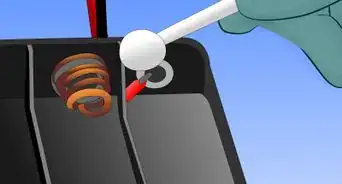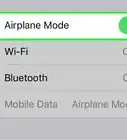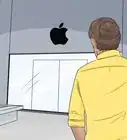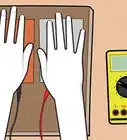This article was co-authored by Ralph Childers. Ralph Childers is a master electrician based in the Portland, Oregon area with over 30 years of conducting and teaching electrical work. Ralph received his B.S. in Electrical Engineering from the University of Louisiana at Lafayette and holds an Oregon Journeyman Electrical License as well as electrician licenses in Louisiana and Texas.
wikiHow marks an article as reader-approved once it receives enough positive feedback. This article received 31 testimonials and 80% of readers who voted found it helpful, earning it our reader-approved status.
This article has been viewed 588,496 times.
Having a power bank with you can be extremely convenient, especially when you are away from a power outlet. Power banks ensure that your devices won't run out of charge. However, in order to charge your devices on the go, your power bank itself has to be charged. Power banks can easily be charged with a laptop or wall socket. Once your power bank is fully charged, you can unplug it and use it again.
Steps
Plugging in Your Power Bank
-
1Check the LED lights to see when your power bank needs charging. While a power bank can be charged at any time, unnecessary charging may decrease its lifespan. Most power banks have 4 LED lights on the side. The lights will shut off as the battery diminishes. Wait to charge your power bank until only 1 or 2 lights are on.[1]
-
2Plug your power bank into a wall outlet if possible. Your power bank should have come with a USB cord and wall adapter. Plug the larger end of the USB cord into the wall adapter. Then, plug the smaller end into your power adapter. Leave the power bank to charge.Advertisement
-
3Plug your power bank into a computer or laptop as an alternative. A computer or laptop can also be used to charge a power bank. Connect the smaller end of the USB cord into the power bank. Then, connect the larger end of the USB cord into your computer or laptop's USB port.
- It will take longer to charge a power bank on a computer than it would with a wall charger.
Letting the Power Bank Charge
-
1Check your manufacturer's instructions for an estimate of charging time. You should not leave your power bank charging longer than necessary. Your manufacturer's instructions should let you know roughly how long it will take to charge. Most power banks charge within 1-2 hours.[2]
-
2Disconnect the charger as soon as it's fully charged. Check the charger periodically as it's plugged in. As soon as all the LED lights are on, unplug the charger. Your power bank’s lights may also blink on and off until it’s fully charged, at which point it the light will stay lit.[3]
- If your LED lights are not working, unplug the charger after the estimated charging time has passed.
-
3Check to make sure the power bank charged properly. After charging your power bank, connect one of your electronic devices to the bank using a USB cord. If the power bank charged correctly, the device should begin charging.[4]
- If the device didn't charge, try plugging it into a different outlet. If your power bank still won't charge, it may be broken. Contact the manufacturer to see if it can be fixed.
Ensuring Efficiency
-
1Use a wall socket in most cases. In general, wall sockets will charge a power bank faster than a computer or laptop. Stick to charging your power bank through the wall unless you only have a laptop or computer available.[5]
-
2Use only the cable that came with the power bank to charge it. The power bank should come with a charging cable with a USB port and a wall adapter. Avoid using a different charging cable that was not designed for the power bank.
-
3Avoid overcharging your power bank. Make sure not to leave your power bank plugged in for too long. Charging the bank for hours on end can cause its battery life to decrease. Only charge your power bank as long as necessary for the LED lights to stop blinking.[6]
-
4Charge your electronic device and power bank simultaneously. While your power bank is charging, plug in any electronic devices you typically charge with your power bank into a wall socket. Charging devices eats up a power bank's battery. If you charge your electronic devices at the same time, you won't have to use the power bank as quickly after it charges. This will increase its battery life.
Expert Q&A
-
QuestionIf I don't use the power bank for a while, does the battery run out anyway?
 Ralph ChildersRalph Childers is a master electrician based in the Portland, Oregon area with over 30 years of conducting and teaching electrical work. Ralph received his B.S. in Electrical Engineering from the University of Louisiana at Lafayette and holds an Oregon Journeyman Electrical License as well as electrician licenses in Louisiana and Texas.
Ralph ChildersRalph Childers is a master electrician based in the Portland, Oregon area with over 30 years of conducting and teaching electrical work. Ralph received his B.S. in Electrical Engineering from the University of Louisiana at Lafayette and holds an Oregon Journeyman Electrical License as well as electrician licenses in Louisiana and Texas.
Electrical Professional Generally, power banks will lose charge after not being used for a long period of time.
Generally, power banks will lose charge after not being used for a long period of time. -
QuestionWhy are there lights blinking on my power bank?
 Ralph ChildersRalph Childers is a master electrician based in the Portland, Oregon area with over 30 years of conducting and teaching electrical work. Ralph received his B.S. in Electrical Engineering from the University of Louisiana at Lafayette and holds an Oregon Journeyman Electrical License as well as electrician licenses in Louisiana and Texas.
Ralph ChildersRalph Childers is a master electrician based in the Portland, Oregon area with over 30 years of conducting and teaching electrical work. Ralph received his B.S. in Electrical Engineering from the University of Louisiana at Lafayette and holds an Oregon Journeyman Electrical License as well as electrician licenses in Louisiana and Texas.
Electrical Professional This usually means that the power bank is at the blinking light level of charge. If the third light of 4 lights is blinking it generally means that the power bank is around 75% charged.
This usually means that the power bank is at the blinking light level of charge. If the third light of 4 lights is blinking it generally means that the power bank is around 75% charged. -
QuestionWhen the battery of power bank is not completely used, can it still be charged safely?
 Ralph ChildersRalph Childers is a master electrician based in the Portland, Oregon area with over 30 years of conducting and teaching electrical work. Ralph received his B.S. in Electrical Engineering from the University of Louisiana at Lafayette and holds an Oregon Journeyman Electrical License as well as electrician licenses in Louisiana and Texas.
Ralph ChildersRalph Childers is a master electrician based in the Portland, Oregon area with over 30 years of conducting and teaching electrical work. Ralph received his B.S. in Electrical Engineering from the University of Louisiana at Lafayette and holds an Oregon Journeyman Electrical License as well as electrician licenses in Louisiana and Texas.
Electrical Professional Yes, the power bank can be charged if the battery is not dead. It is best to recharge when the battery almost used up.
Yes, the power bank can be charged if the battery is not dead. It is best to recharge when the battery almost used up.
References
- ↑ https://www.easyacc.com/media-center/how-to-know-power-bank-is-fully-charged/
- ↑ https://www.easyacc.com/media-center/how-to-know-power-bank-is-fully-charged/
- ↑ https://www.easyacc.com/media-center/how-to-know-power-bank-is-fully-charged/
- ↑ https://www.easyacc.com/media-center/how-to-know-power-bank-is-fully-charged/
- ↑ http://www.ebay.com/gds/How-to-Charge-the-Power-Bank-/10000000205273228/g.html
- ↑ https://www.easyacc.com/media-center/how-to-know-power-bank-is-fully-charged/
About This Article
To charge a power bank, start by plugging the larger end of the USB cord into the wall adapter, and the smaller end into the power adapter. Then, plug your wall adapter into an outlet. Alternatively, charge your power bank by connecting the larger end of the USB cord into your computer or laptop’s USB drive. Remember to disconnect your power bank as soon it’s fully charged, since overcharging may reduce the lifespan of the battery. To learn more, including how to use a power bank to increase the battery life of your other devices, read on.
